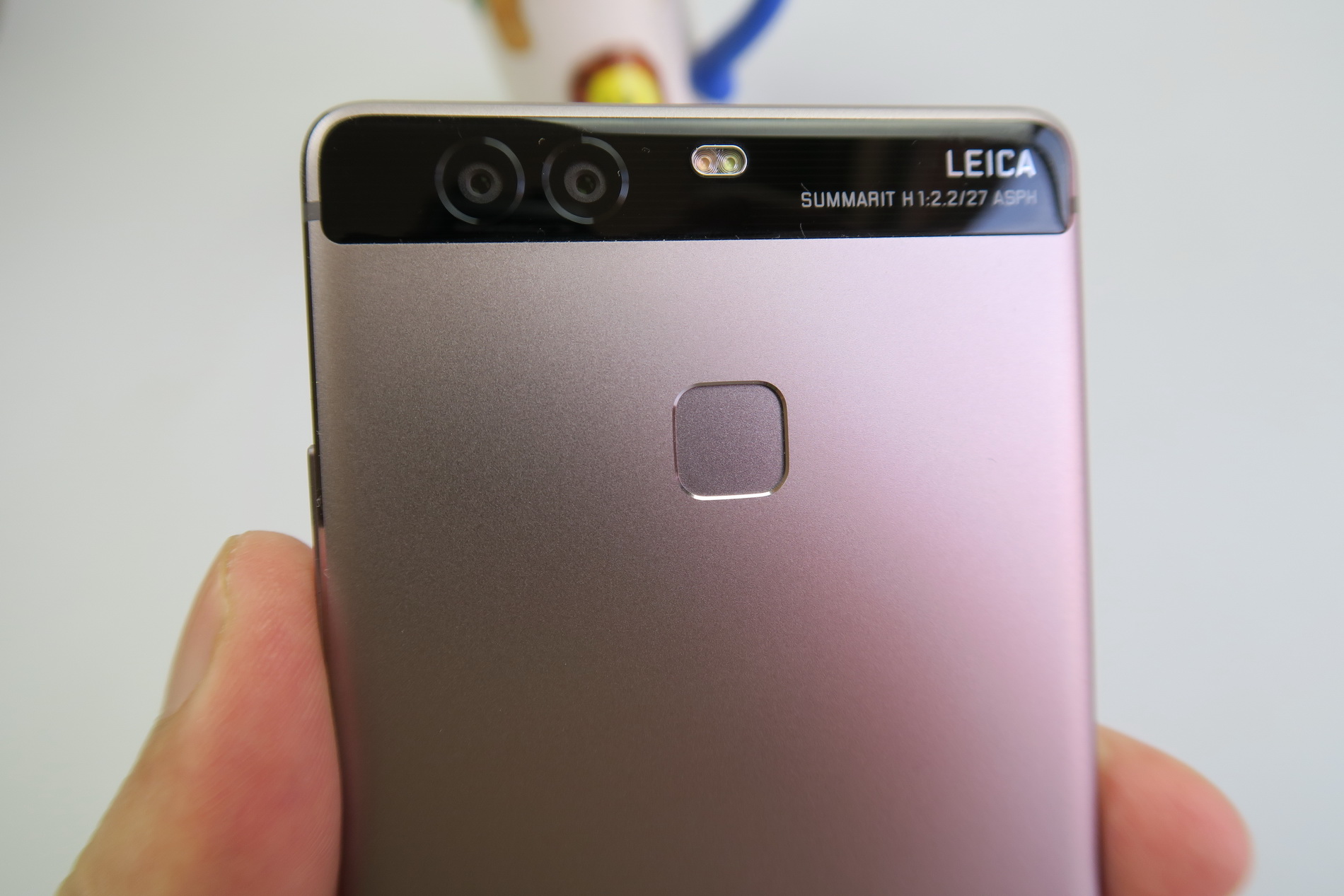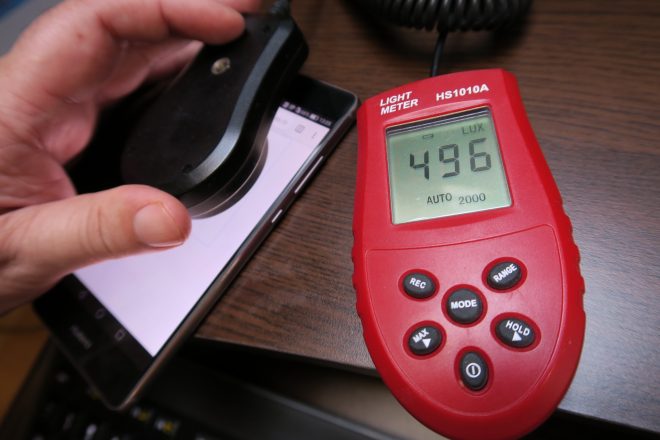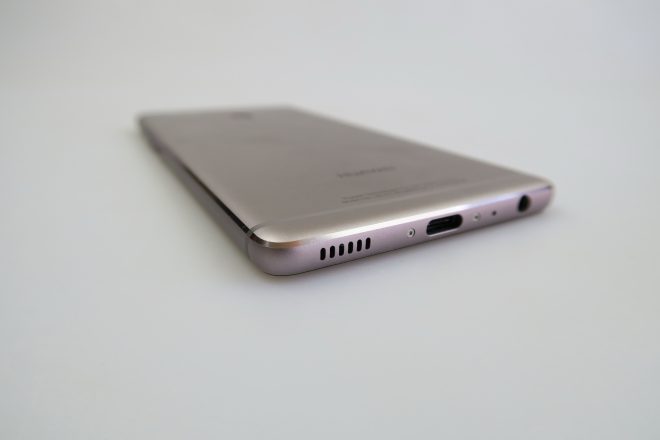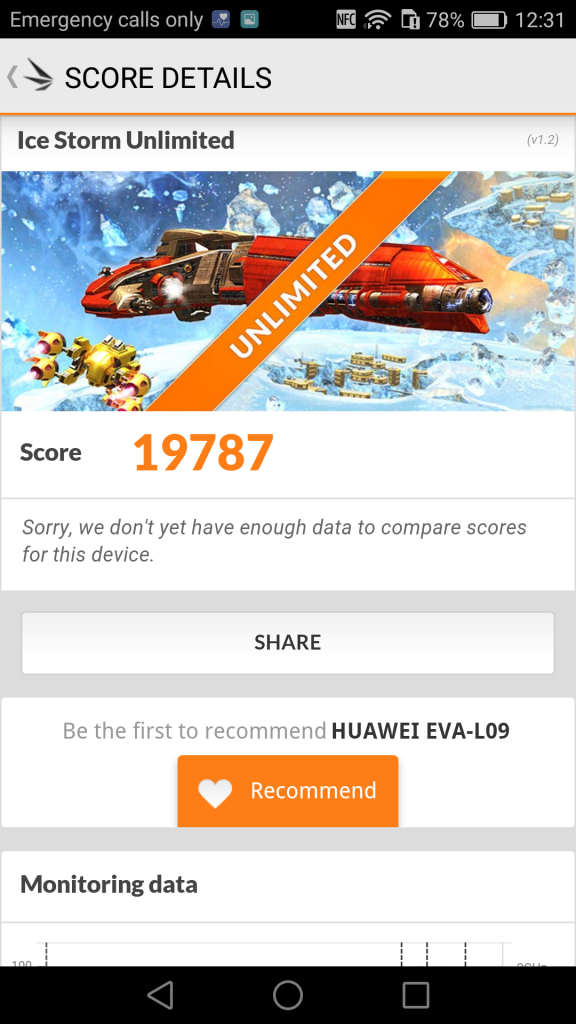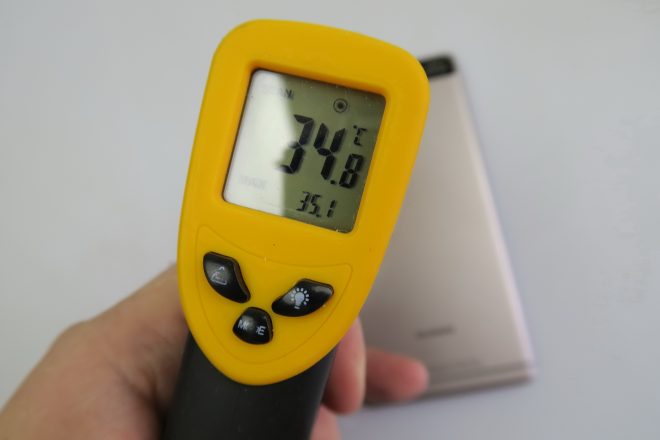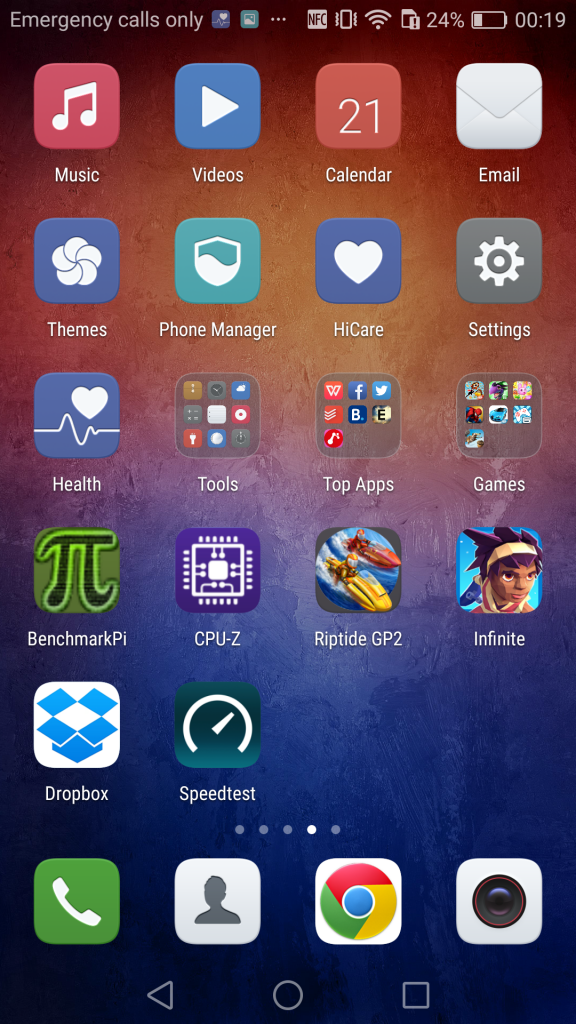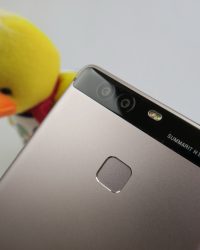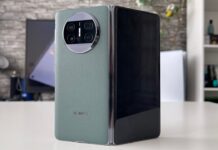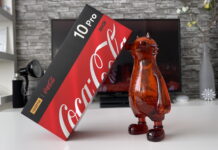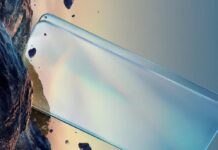Here we are, with the Huawei P9 review, the one you’ve been waiting for. This handset is the one to check out, if you’re planning on taking quality pictures during your holiday, that should be coming soon. The handset was announced in London in early April with the P9 Plus and it’s the 2016 Huawei flagship with Leica technology on board. It’s priced at 599 euros in the 3 GB RAM/32 GB storage version and 649 euros in the 4 GB RAM/64 GB storage version.
We’re testing the 3 GB RAM/ 32 GB storage version, in case you’re wondering. As far as design goes, we’re dealing with a very light and comfy phone, maybe even too light for is own good. It’s an elegant and premium product, with no camera bulk and a good looking camera area. That one is covered with a piece of glass, like the Nexus 6P, but also with some nifty lines traced on the glass.
The phone provides good grip, comes with an aluminum unibody chassis and a 2.5D glass panel upfront. This flagship measures 6.95 mm in thickness and weighs 144 grams, which is exactly the same weight as the predecessor, but also a bit thicker. The same diagonal from the P8 is kept, 5.2 inches and the physical buttons are comfy. There’s also a Ceramic White model with actual ceramic and overall I felt that one hand usage was comfy.
Huawei P9 is available in gold, white, rose gold, grey and silver and it has a fantastic design, certainly making it the prettiest Huawei ever. Moving on to hardware, we’re getting a 5.2 inch Full HD screen here, an IPS LCD with a not so narrow bezel, compared to what it appears to be when the screen is off. It’s actually an IPS Neo LCD, if you want to get technical, made by JDI.
The video player bundled with the phone has a DTS and Play Speed feature, while the viewing experience involved high brightness, crisp image and a slight oversaturation. View angles are wide, the contrast is OK in full sunlight, but the screen panel is a bit reflective. Pixels are of the RGB Stripes variety and then we measured the brightness level and reached 496 LUX.
That’s a good result and certainly better than the one of the Huawei P8 (346 LUX), as well as the Huawei Honor 5X, Galaxy S5 and iPhone SE. Still, we are below the Sony Xperia Z5 (537 LUX). Settings offered for the same screen involve a color temperature slider, with a warmer or colder setting and a big color ball to pick hues from.
Front and brightness are also included as options here. This is a great screen in the end, so not much to object here. The discussion moves on to the CPU and performance and we’re getting an octa core HiSilicon Kirin 955 chipset here, clocked at up to 2.5 GHz. There’s also 3 or 4 GB of RAM, 32, 64 or 128 GB of storage and a microSD card slot.
Obviously, this being a flagship, there’s no lag, the device is faster and performance is great. It can run any game, from Riptide GP2 to MK X, Asphalt 8 and Modern Combat 5. In benchmarks we did pretty fine and while we beat the Galaxy S6 Edge+ in GeekBench, we were below the Huawei Mate 8 in AnTuTu 6 and usually below the Snapdragon 810 models in 3DMark for example.
I’d place this handset above the Snapdragon 808 models, but below the S810 ones. Once again, we did test the 3 GB RAM version. The temperature was also mentioned, with 35.1 degrees Celsius reached after playing the game Riptide GP2 for 15 minutes, so there’s no overheating. On the acoustic side of things, I was surprised to see that Huawei ditched the dual grille setup for a single grille here, hiding the speaker.
The Music player is a typical EMUI affair, with no EQ and only a DTS option. The listening experience brought a very, very loud sound, that covers a conversation and a great voice, piano and guitar rendering. This is one of the best speakers I’ve heard over the past yuear and it has a great bass. We used a decibelmeter to measure its power and got as high as 83.9 dBA, although it feels higher.
As such, we surpassed the iPhone 6 Plus, Huawei Mate 8 and the Huawei P8. The headphones are unchanged from the Huawei P8, they resemble EarPods and have a big plastic body and big remote. Not very comfy, but they’re loud, clear and have good bass and noise isolation. Great audio here, but no FM radio. So here we are, at the core of the review, the CAMERA.
We’re getting a dual camera here, co engineered by Leica and sporting lenses made by Sunny Optical Tech from China, with Leica technology. Since this is a dual camera setup, we get one camera that captures RGB images (colors) and one that does monochrome capture (black and white) Each is a 12 megapixel sensor, with F/2.2 aperture.
We also get a dual tone flash, BSI and CMOS tech, but no optical image stabilization. There’s also a laser focus mechanism here and the sensors are of the Sony IMX286 variety. The colors of the RGB sensor are combined with the detail of the monochrome sensor, with the result looking great. Huawei also offers an 8 megapixel front camera, with F/2.4 aperture.
Adding to the optical power is a dual core ISP, Pro DSP and a depth ISP. RAW capture is included among the options, too. The camera app starts up fast and fast is the focus as well, plus the zoom is fluid. Picture taking is not very fast, we have to mention that. The camera UI has been changed from the P8 and we find the filters on the left and a special depth of filed option.
That lets you increase or decrease the blur around a subject, to highlight it. To the right side we can trigger the Pro mode, with sub options like White Balance, Focus, Exposure, Shutter (from 1/4000 to 30 seconds), ISO and Metering. The Modes area is accessed with a swipe and the list is generous, including the likes of: Beauty, Beauty Video, Light Painting, Watermark, Monochrome, HDR, Night Shot, Slow Motion, Document Readjustment, Panorama, Time Lapse and Audio Note.
The Settings include a Film Mode, that lets you tweak hues and colors with options like Standard, Vivid and Smooth. The video tops at Full HD in 60 FPS and there’s also digital stabilization. We have a huge, huge gallery available here, one that includes over 500 pictures, including some in cloudy London and sunny Bucharest.
During the sunny day (gallery here), we achieved shots with perfect colors, great details and when we zoomed in at the maximum level, but we didn’t lose any details. The texture of the flowers and statues looked great. White balance, exposure and focus are spot on here. We played with the focus, with excellent results and captured a great panorama, with nice details and wide resolution.
Selfies were excellently light, crisp and both the hair and skin had great texture. Focus was fantastic and there was no sun burn, in spite of it being a very sunny day when we took shots. The sky looked perfect and the monochrome captures were pretty much perfect, artsy and however you want to call them, synonimous with artistic.
This is not your average black and white capture, since the camera doesn’t desaturate colors via software, but rather it actually captures the images in black and white. We also recorded a great HDR, in that shot of a church. The London photos brought us excellent food texture in that restaurant, perfect indoor shots and great lighting, plus crisp images.
I particularly liked the night landscapes taken in London. Even with the cloudy weather, the dual camera got perfect details, colors and exposure. I think that Huawei outdid itself this time and there are aspects where the P9 is better than the Samsung Galaxy S7. Since we tested this camera before the Galaxy S7, it seemed like the best camera on an Android phone ever, but now after having tested the S7, it’s a bit relegated, to “the best camera you can take artistic shots with… period!”.
Low light captures had good clarity and brightness, showed us the flash is powerful and offered some realistic colors. The Super Night mode turns night into day and even though there were some reflections, we did like the overall quality of nocturnal captures. Tail Light effects were nice looking and even though the device recorded low light photo captures with a lesser quality than the Huawei Mate 8, they’re still good.
Video capture was taken in MP4 format, in Full HD, at 30 or 60 FPS. Bitrate was 17 or 35 Mbps and sadly there wasn’t any 4K capture or OIS support. We did get an extra slow motion mode, but the result was rather burnt. I found the videos, or at least some of them to be shaky, but the details were great even when zooming in.
Colors are vivid, but also realistic and the brightness is high. Some corners of the image got burnt, but once again it was 30+ degree Celsius day. In the London series of captures, we had a pretty poor stabilization, but at least there was no focus loss. There were some wind problems with the microphone not being able to withstand it.
Clarity was good, but only good, not fantastic and we had poor stabilization when we walked around to see how well the image gets stabilized in motion shots. Huawei P9 has good filming but not on par with the Galaxy S7 or Nexus 6P for example. Low light video capture was well lit and the colors were realistically rendered.
I have to say these vids didn’t look bad at all and generally the colors were better handled than on the Huawei Mate 8 and Lenovo Vibe X3, video-wise. Focus was better, but not the stabilization and clarity. The main achievement here is that the P9 films much better than the Huawei P8 and it also takes much better and artsy shots.
The web browser of choice here is Chrome, with a mid level speed, but also great benchmark results in Vellamo, BrowserMark or Sunspider. The virtual keyboard was comfy and had big keys, as well as Swype support. On the connectivity side of things, there’s a single SIM version of the phone, plus a dual SIM one. We get here 4G LTE Category 6 with up to 300 Mbps download speed, NFC, GPS, Glonass, USB Type C, Bluetooth 4.2, WiFi a/b/g/n/ac dual band and DLNA, as well as WiFi Direct.
Huawei P9 comes with virtual HD calls, a Pocket Mode and Speed Dial. Calls offered great quality, volume and signal and the Speedtest via WiFi offered us 23 Mbps in download and 26 Mbps in upload, both good results. As far as the battery goes, Huawei P9 comes with a 3000 mAh unit (Li-Po), an upgrade from the P8’s 2600 mAh battery.
This is sadly the Achile’s heel of the phone, because we only got 7 hours and 9 minutes of video playback here, slightly above the Huawei P8’s 6 hours and 55 minutes and scoring below the Amazon Fire Phone and the Sony Xperia E4. In PCMark we scored 4 hours and 31 minutes, even less than the Huawei P8’s 5 hours and 31 minutes and also below the Huawei P8 Lite and Mstar S700.
Charging requires 2 hours and 10 minutes, which is OK and 37 minutes less than Huawei P8. I’d say all these results are underwhelming and they’re many hours away from the scores of the heavy hitters on Android this year. In the Settings area you can close power hungry apps and activate one of the Power Plan features, like Performance, Smart and Ultra Power Saving.
Each of them tweaks the usage of the CPU and network. You can also rely on the ROG Power Save, that takes the resolution down from 1080p to 720p. Moving on from this letdown, Huawei P9 runs Android 6.0 with EMUI 4.1 on top, which is quite similar to the Emotion UI 3.1 version. We’re talking about the look of the icons and the general look of the UI.
It’s minimalistic, abstract and flat. Multitasking is now a horizontal carouse, no longer 4 big thumbnails like before. Pinching the homescreen triggers the widgets, transitions and layout area, all of them with tweaks. There’s no app drawer here and all the apps are placed on the homescreens. The dropdown bit features the notifications shown as a timeline and Quick Settings, so nothing has changed here.
P9’s lockscreen displays steps courtesy of a pedometer, 4 shorcuts and media player options, once you swipe up. Swiping down in the homescreen triggers an iOS Spotlight-style search area. We also tested the fingerprint scanner, that unlocks the screens, lets you access a “safe” and app lock area. There’s a 6 step setup involved and using the scanner, which by the way is very accurate an fast you can also take a picture, answer a call or browse pictures in the gallery, with swipes.
There’s also the Smart Assistant area in the settings, with Nav Bar options, Floating Dock options, Motion Control, Knuckle Gestures, One Hand UI and Voice Control, too. Do Not Disturb, Smart Cover and Glove Mode are all here. When it comes to preinstalled apps, there are 50 of them, which is equal to bloatware in my book.
Aside from Health, Themes and Phone Manager, you can neglect the rest. And now let’s see the verdict!
These are the Pros:
- good debut price
- great design
- very good screen
- good performance
- flagship acoustics
- perfect picture capture
- great selfies
- great monochrome shots
- nice UI
- good low light capture
- OK video capture
And the Cons:
- battery is a big letdown
- feels too light in the hand
- oversaturated screen (a bit)
- benchmarks can’t surpass a Snapdragon 810 phone
- video capture isn’t on flagship level
- bloatware
At the time of the phone’s review we called it the best Android smartphone camera-wise, but then we tested the S7 and that feeling changed. Huawei P9 remains the best phone to take artistic pictures with, the prettiest Huawei phone and the most powerful one from this brand, so too bad for that battery, which is kind of spoiling the party.
The price is also very good and this is the Tesla of this year’s flagships, in my book, one of the biggest compliments I can pay to this model. The updated price is here.

